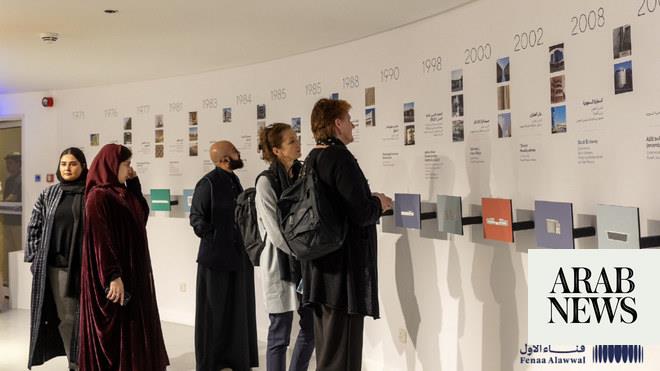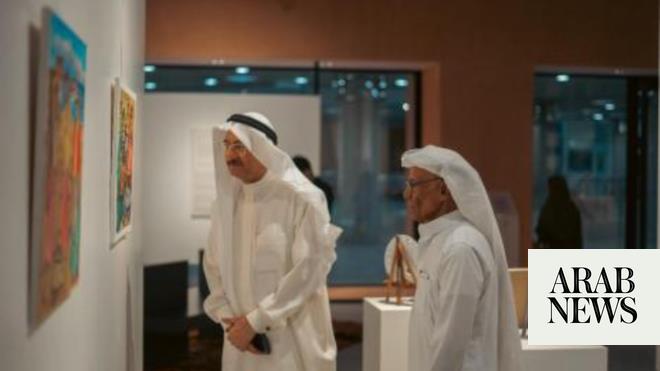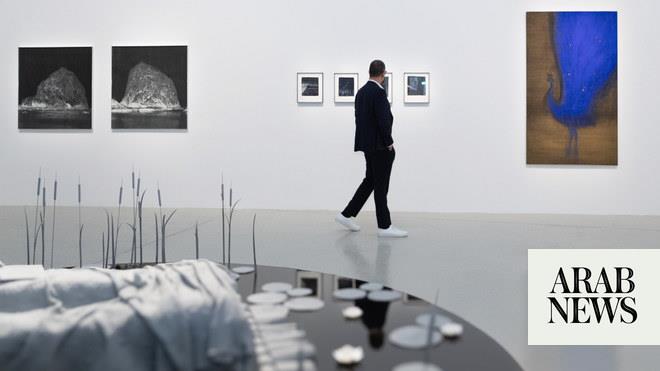
RIYADH: Fenaa Alawwal launched the Nabil Fanous Exhibition on Sunday in memory of the late Palestinian architect’s rich legacy and contributions to Saudi Arabia.
Fanous, who was born in 1940, was one of the most prolific and renowned architects in the Arab region. He was progressive, gaining international recognition for his design projects and collaborations. Fanous transcended borders to produce a rich body of work evident in the post-modern Saudi landscape before his death in 2017.
This is the first exhibition that sheds light on the multifaceted career and dedication that anchored Fanous as a design pioneer. It pays homage to the architect’s talent and vision and allows visitors to experience his creations through artistic renditions.
In a unique and poignant tribute, the works are showcased in a building he designed, Fenaa Alawwal.
Originally commissioned by the Saudi Hollandi Bank in 1985, the building is a cultural landmark in Riyadh’s Diplomatic Quarter.
The exhibition includes a selection of Fanous’s unique architectural designs and works by artists and architects inspired by his practice.
Stepping into the exhibition is like stepping into the architect’s mind, as each structure and space exudes his signature style and attention to detail.
As visitors meander through the exhibition, they cannot help but feel a sense of connection to the architect and his profound influence. This exhibition serves as a celebration of a life dedicated to the creation of spaces that shape our lives and reminds us of the enduring impact of a visionary architect.
Laurian Ghinitoiu from Romania is among the artists showcased at the exhibition. He too is an architect and also works with film, photography, and installations.
His photography positioned key Fanous buildings into the respective decade they were built in.
With an observant, curious, and appreciative gaze, the photographer saw beyond the structures, uncovering the storylines that unfolded within the heart of the city around them.
Ghinitoiu told Arab News: “The way I look at architecture is to look into the elements but also the way they are used, standing still as time expands into the space.”
His work has featured in exhibitions around the world, including the US and Germany.
Ghinitoiu presented the photos he captured of the buildings, saying: “I visited seven projects, and I picked one photo from each of the projects to try to get a feeling encapsulated in the buildings through one single shot.”
He added that Fenaa Alawwal’s old basement, where the exhibition is, used to be a bank safe.
“Because of that curvature within the previously safe room, I decided to frame my photographs in a concave shape. It gives it the 3D effect as well,” Ghinitoiu said.
Positioned as an architectural anthology rather than a comprehensive overview of his monumental body of work, the exhibition provides an in-depth look at a selection of buildings, including those from Fanous’ early brutalist-inspired era such as the GOSl headquarters, his post-modern expressionism period, and also his material-centered contemporary work such as the Arab Urban Development Institute.
Alia Mardini’s rendition of Fanous’ architecture is a skillfully cut tapestry made of paper to create a visually intriguing geometric shape that reflects the magnificence of the l structures.
“Each layer together captures the essence of Fanous’ architectural vision, highlighting the interplay between light, shadow, and form,” she told Arab News.
The final result was a mesmerizing display of geometry and architecture, allowing viewers to experience a harmonious blend of art and design.
The exhibition runs until April 14.












